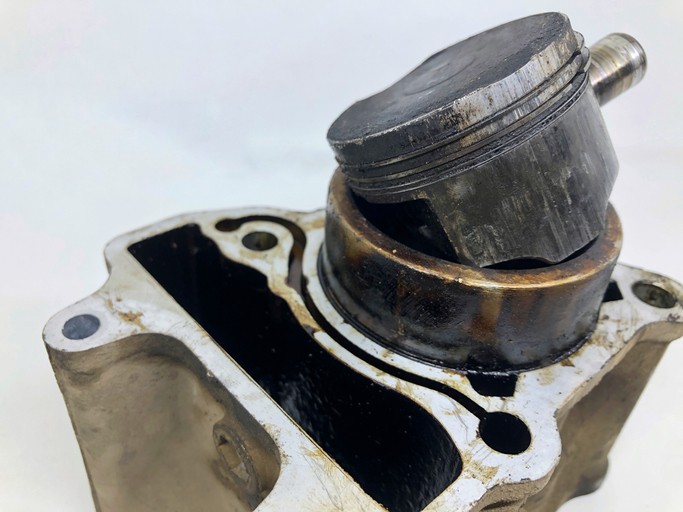Several factors can influence your engine’s coolant temperature, including engine workload, weather conditions, and the health of your cooling system. Regularly checking your engine’s coolant temperature gauge is crucial to ensure it stays within the normal operating range. As an essential aspect of vehicle maintenance, understanding the Temperature Of Coolant is key to preventing serious engine issues.
Normal Coolant Temperature Range
If your engine temperature gauge ever enters the red zone, it’s imperative to stop your car immediately to prevent severe engine damage. Normal coolant temperature typically ranges from 195 to 220 degrees Fahrenheit (approximately 90 to 104 degrees Celsius). Temperatures outside this range can signal potential problems that require attention. Maintaining the correct temperature of coolant is vital for optimal engine performance and longevity.
The Detrimental Effects of High Coolant Temperature
While your vehicle might still operate when the temperature of coolant is excessively high, it’s silently causing damage to internal engine components. Ignoring high coolant temperature can lead to significant and costly repairs. The consequences include:
- Fuel Combustion Issues: Elevated temperatures can cause engine knocking or pinging, where the fuel ignites prematurely. This improper combustion reduces engine efficiency and can damage engine parts over time.
- Increased Fuel Consumption: An overheated engine has to work harder to maintain performance. This increased effort translates directly into higher fuel consumption, making your vehicle less economical to run.
- Piston Damage: Extreme heat can cause significant damage to pistons. Overheating can lead to piston expansion and potential seizing within the cylinders, necessitating expensive repairs or even engine replacement.
- Head Gasket Failure: Prolonged exposure to high coolant temperatures is a major cause of head gasket failure. The intense heat can also warp or crack the engine head, leading to coolant leaks, loss of compression, and engine failure. Addressing head gasket issues promptly is crucial to avoid further engine damage.
If you experience head gasket or engine block damage due to overheating, consider using a product like K-Seal as a cost-effective solution to repair leaks and avoid expensive mechanic bills.
The Problems Associated with Low Coolant Temperature
Just as excessively high coolant temperature poses risks, a temperature of coolant that is too low can also lead to various operational problems:
- Reduced Engine Efficiency: Engines are engineered to operate most efficiently within a specific temperature range. When the coolant temperature is too low, the engine may not reach its optimal operating temperature. This suboptimal condition reduces overall engine efficiency and performance.
- Increased Fuel Consumption: A cold engine requires a richer fuel mixture to run correctly. In colder conditions, fuel doesn’t vaporize as effectively, leading to incomplete combustion. This results in increased fuel consumption as the engine works harder to maintain operation.
- Increased Emissions: Inefficient combustion in a cold engine leads to higher emissions. The engine’s catalytic converter, which reduces harmful pollutants, also operates less effectively at lower temperatures, resulting in increased release of harmful emissions into the environment.
- Poor Heater Performance: Your vehicle’s heating system relies on hot coolant to warm the air circulated into the cabin. If the temperature of coolant is too low, the heater will not function effectively, resulting in inadequate cabin heating and reduced comfort, especially in cold climates.
- Engine Freeze: In extremely cold conditions, if the coolant temperature drops too low, especially if the coolant mixture isn’t adequately antifreeze-protected, the coolant in the radiator and engine block can freeze. Engine freezing can cause severe damage, including cracked engine blocks, and prevent the car from starting.
Methods to Check Your Engine Coolant Temperature
Monitoring your engine coolant temperature is easily achievable using features in most modern vehicles. The engine coolant temperature gauge on your dashboard provides a quick visual indication of whether your engine is running too hot, too cold, or within the normal range.
For vehicles manufactured after 1996, electronic temperature gauges are commonly installed. These gauges can be further checked for accuracy using a diagnostic device. You can either purchase a diagnostic tool for personal use or have a mechanic verify the gauge’s readings to ensure accurate temperature monitoring. Regular checks ensure that you have a reliable indication of the temperature of coolant.
Beyond manual checks and dashboard indicators, modern vehicles are equipped with an engine coolant temperature sensor. This sensor is designed to precisely measure the temperature of engine coolant and works in conjunction with the engine control unit (ECU). The ECU uses the temperature readings to adjust fuel injection and ignition timing, optimizing engine performance and preventing overheating. When the coolant temperature rises too high, the ECU uses the sensor data to adjust ignition timing, fuel mixture, and activate the cooling fan to regulate and maintain a consistent and safe operating temperature.
How K-Seal Can Help Manage Engine Coolant Temperature
If you suspect a coolant leak is affecting your engine’s temperature regulation, adding K-Seal to your cooling system is a recommended solution. For general coolant leaks, use K-Seal Coolant Leak Repair. For more serious issues like head gasket, head, or engine block problems, K-Seal Ultimate is specifically designed for these repairs.
After using K-Seal to effectively seal any leaks, the temperature of coolant should return to its normal operating range. However, it’s still essential to consistently monitor your temperature gauge to ensure your engine consistently operates within the optimal temperature range.
Maintaining your engine at the correct coolant temperature through regular monitoring and addressing issues promptly ensures enhanced engine performance, improved fuel efficiency, and extends the lifespan of your vehicle.

